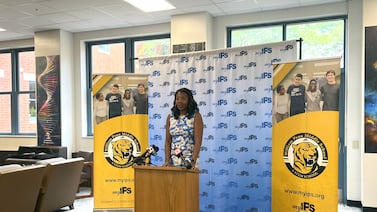It’s almost budget season and for many Colorado school districts out of compliance with state rules on reading, that means it’s time to talk about purchasing new curriculum.
That’s what happened Thursday in Colorado’s second-largest school district, the 80,000-student Jeffco Public Schools. District leaders presented three options to replace the current mish-mash of programs used to teach elementary students how to read.
While the district has not yet decided which of the three curriculums it might adopt, or whether to offer schools more than one choice, the shift to a districtwide approach represents a significant departure from the status quo. Currently, Jeffco schools use a number of different reading programs, including some the state has rejected because include discredited approaches to reading instruction.
Jeffco isn’t the only district in this situation. Denver and Douglas County are two other large districts where reading curriculum varies widely from school to school. Some schools in all three districts use programs that don’t satisfy a 2019 state law requiring K-3 reading curriculum be backed by science. To comply with that law, the districts will have to make a good-faith effort to switch or they could face state sanctions.
Jeffco is considering three reading programs, all of which have been approved by the state. They are Wonders 2020, Into Reading, and Benchmark Workshop.
The switch will be pricey, especially coming amid pandemic-era budget uncertainty. Jeffco officials said the cost of adopting a new reading curriculum will range from $8 million to $16 million depending on the program they choose. That’s about 1% to 2% of the district’s $806 million general fund budget.
But board members expressed a willingness to spend that money, repeatedly saying reading instruction is at the core of what schools do. Most board members also said they’d allow some schools with specific niches — expeditionary learning, classical education, or dual language learning — to get “variances” to use reading curriculums other than what the district adopts.
Board President Susan Harmon summarized the board’s philosophy, saying, “We’re looking to move everyone into a more uniform approach ... understanding there will be deviations. That is kind of a given in everything we do, but that is the exception.”
Board member Stephanie Schooley generally agreed with the purchase of a new program, but cautioned that a new reading curriculum alone won’t be a silver bullet for the districts’ mediocre reading achievement.
The district can’t just find “a [curricular] resource that we’re going to hang our hat on,” she said, but must also provide adequate support and training for teachers.







